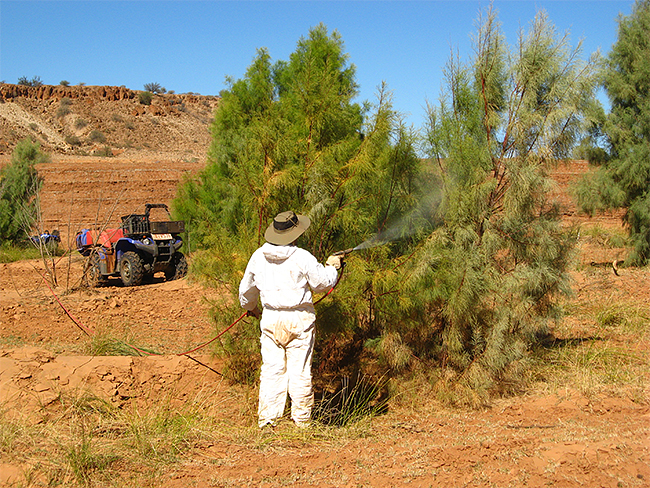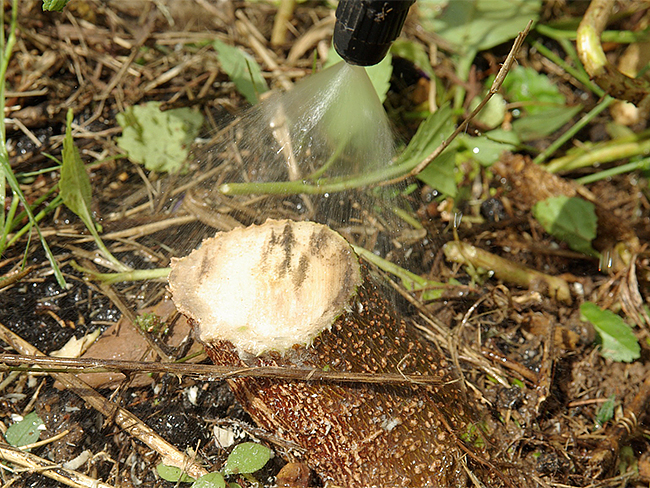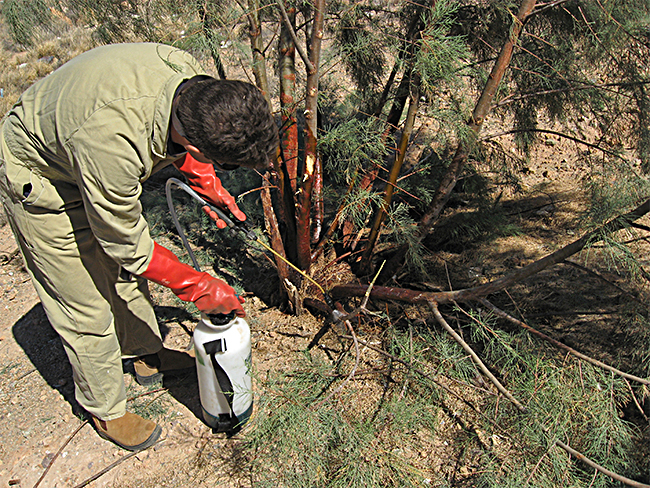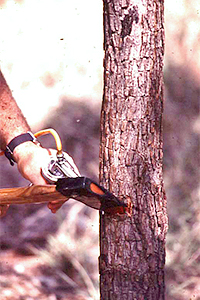Types of control methods
Chemical control
Chemical weed control uses herbicides and other chemicals to control weeds in specific situations, which are specified on the herbicide label.
Herbicides must be used according to the directions for use on the Australia Pesticides and Veterinarian Medicines Authority registered label.
For more information, go to the Australian Pesticides and Veterinary Medicines Authority (APVMA) website.
There are a variety of techniques and equipment available to apply herbicides.
The method chosen is determined by:
- the type of weed and its growth
- size of the infestation
- access
- resources available
- personal preference.
Cut stump treatments
Larger weeds are physically cut as close to the ground as possible using brush cutters, loppers, or chainsaws. Herbicide is applied immediately to the freshly cut surfaces of stumps or grasses.
This method helps to control the tree root system, and is especially useful in species that spread via suckers by preventing sprouting and regrowth.
Rope wick application
A wick or rope is soaked in herbicide and used to wipe or brush the chemical over the weed. This can be from a reservoir attached to a handle or it can be pumped to the wick using 12-volt equipment.
This is a useful method when killing a certain weed to avoid damaging surrounding plants.
Soil applied spot concentrate
Herbicide is applied directly to the soil beneath the weed and is taken up by the roots or the newly emerging shoots.
Basal barking
Oil soluble herbicide is mixed with diesel and sprayed around the full circumference of the trunk or stem of the weed. The diesel helps the herbicide to move through the bark and allows it to enter underground storage organs within the weed to slowly kill it.
This is an effective way to treat saplings, regrowth and multi-stemmed shrubs and trees.
Print all pages in this section
Give feedback about this page.
Share this page:
URL copied!



